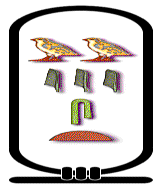 Peter West uses the name WestPeter on Twitter. According to his Twitter profile he lives in London, ON and is interested in “scholarly articles, books & proceedings of interest to knowledge workers.” On July 1 he posted the following:
Peter West uses the name WestPeter on Twitter. According to his Twitter profile he lives in London, ON and is interested in “scholarly articles, books & proceedings of interest to knowledge workers.” On July 1 he posted the following:
WestPeter Matching knowledge brokering strategies to environmental policy problems & settings http://is.gd/1jy44 (Environ Sci & Pol) #KM $
http://is.gd/1jy44 is a shortened url that takes you to the following url:
http://www.sciencedirect.com/science?_ob=ArticleURL&_udi=B6VP6-4WN1YKP-1&_user=10&_coverDate=06%2F30%2F2009&_rdoc=2&_fmt=high&_orig=browse&_srch=doc-info(%23toc%236198%239999%23999999999%2399999%23FLA%23display%23Articles)&_cdi=6198&_sort=d&_docanchor=&_ct=28&_acct=C000050221&_version=1&_urlVersion=0&_userid=10&md5=f6f3b208e4367a1200b1273437d0f658
 … which is why we use shortened urls but that’s not the purpose of this blog… this url is an abstract of a paper from Sarah Michaels (U. Nebraska) titled “Matching knowledge brokering strategies to environmental policy problems and settings”. Only the abstract was available so I contacted Sarah who was kind enough to send me the pre-print (thank you Sarah). Two things are important here:
… which is why we use shortened urls but that’s not the purpose of this blog… this url is an abstract of a paper from Sarah Michaels (U. Nebraska) titled “Matching knowledge brokering strategies to environmental policy problems and settings”. Only the abstract was available so I contacted Sarah who was kind enough to send me the pre-print (thank you Sarah). Two things are important here:
1. There is a whole body of literature on knowledge brokering for environmental policy that I never knew about. I have never heard of the scholars (except Lindquist) listed in her references yet it appears that knowledge brokering for environmental policy aligns well (see table below) with those of us who inform our practice using a health frame of reference. ResearchImpact draws its knowledge brokering practice mainly from Lavis et al [Journal of Health Services Research and Policy (2003) 8(3):165] using the producer push, user pull and knowledge exchange methods plus our description of co-production [Evidence & Policy (2009) 5(3):211]. But Sarah introduces us to a new term – capacity building: “intensive knowledge brokering is about creating and sustaining capacity for innovation”.

It is nice yet surprising to see a whole body of literature that has arisen independently but consistently with our practice and yet to learn something new. I wonder if Sarah is aware of the work we draw from: Lavis, Landry, Estabrooks, Grimshaw, Nutley, Levin…
2. The second important observation is I found this on Twitter. Sarah published her paper, WestPeter found it, tweeted, and because ResearchImpact follows WestPeter I saw the tweet, got the link, e-mailed Sarah, read the paper and now you’re reading the blog and maybe you will read her paper. That is the power of social networking. Sarah’s paper found a wider audience, I read some new literature and I “met” a like minded colleague – all thanks to less than 140 characters.
Unlike how it markets itself, Twitter should be “what do you want to share” not “what are you doing”!
Go on… log on to Twitter and connect to lasting value in less than 140 characters.